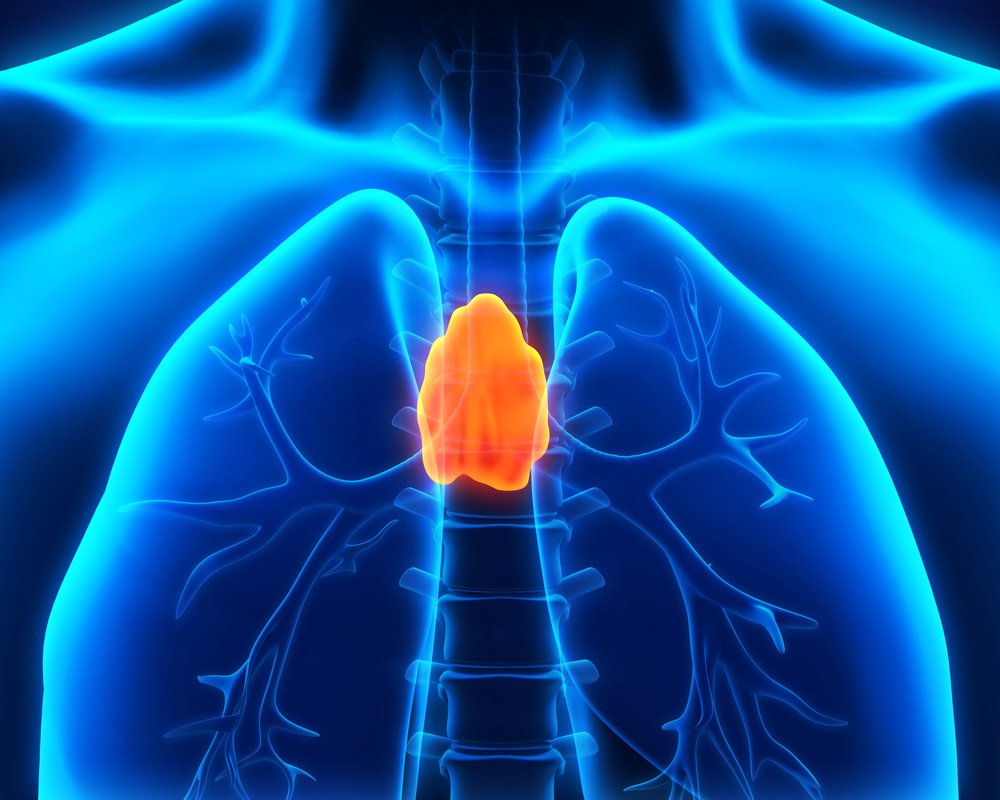Video-Assisted Thoracic Surgery Safe and Effective Method for Thymoma Removal, Study Finds
Written by |

Researchers have determined that video-assisted thoracic surgery to remove a thymoma — a tumor in the thymus — is a safe and effective surgical method.
The study, “Video-assisted thoracic surgery for thymoma: long-term follow-up results and prognostic factors—single-center experience of 150 cases,” was published in the Journal of Thoracic Diseases.
Approximately 15 to 20 percent of patients with myasthania gravis have thymomas, which can be either benign or malignant. Initial treatment for a thymoma is surgery, generally conducted using an open surgical approach via median sternotomy (an incision in the sternum).
Video-assisted thoracic surgery (VATS) has recently come to the forefront of medicine. The minimally invasive procedure involves inserting a tiny camera and surgical instruments through small incisions in the chest wall. Images are transmitted onto a video monitor to guide the surgeon through the procedure. The method, however, remains controversial due to a lack of large-scale studies with long-term results.
In an attempt to fill this gap, Chinese researchers conducted a large retrospective study to determine the safety and effectiveness of the VATS approach for thymoma removal. Researchers followed 134 patients who underwent VATS for thymoma removal for up to 10 years.
Overall results indicated that the five-year recurrence-free survival rate — the percentage of patients who did not have a thymoma recurrence in five years — was 96.5% and the 10-year recurrence-free survival was 94.4%.
Researchers analyzed the outcomes by classifying patients according to their stage in the Masaoka system, which is what physicians commonly use to define thymomas.
For patients that were classified at Masaoka stages I and II, the five and 10-year recurrence-free survival rates were both 98.1%. Patients at Masaoka stage III had a five-year recurrence-free survival rate of 90% and a six-year recurrence-free survival rate of 60%. Out of the five patients at Masaoka stage IV, one patient recurred, making the four-year recurrence-free survival rate 80%.
Statistical analysis indicated that patients at Masaoka stages III and IV had a higher chance of recurrence, which was expected as these stages are an accepted prognostic factor for the risk of recurrence.
Of note, researchers discovered that older patients had a lower risk of recurrence than younger patients, which had not been conclusively shown before.
In total, 44 patients had myasthenia gravis, 36 of whom were followed up. Nine of these patients were able to achieve complete remission, and 19 patients experienced an improvement in symptoms after surgery. Researchers determined that the overall response rate of myasthenia gravis patients was 77.8%.
Additionally, the authors write that patients with myasthenia gravis treated for thymoma by VATS “had comparable neurological outcome” to the standard approach.
“VATS was a safe and effective procedure for treatment of thymomas with satisfactory prognosis,” the authors concluded. However, they add, “a longer follow-up period is required.”






Leave a comment
Fill in the required fields to post. Your email address will not be published.